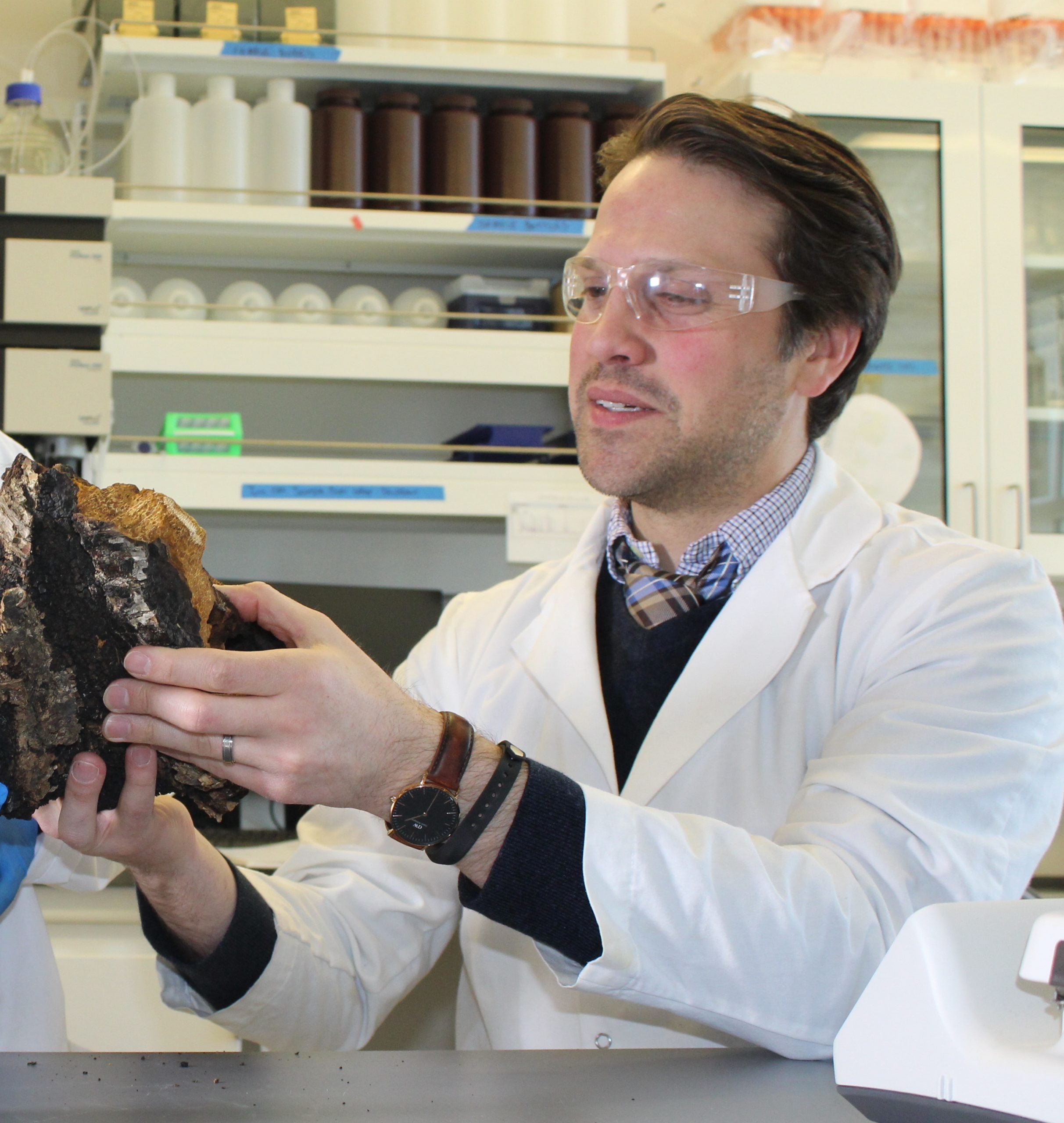Matt Bertin’s research into the use of chemicals from algal blooms published in national journal
A URI College of Pharmacy professor’s study on the potential use of chemicals commonly found in algal blooms to reduce neuroinflammation has been published in a journal of one of the largest scientific organizations.
Assistant Professor of Biomedical and Pharmaceutical Sciences Matthew Bertin is teaming up with biotech firm Biosortia Pharmaceuticals Inc. to study the chemicals produced by algal blooms, which may hold the key to reducing neuroinflammation, a primary cause for diseases such as Alzheimer’s and Parkinson’s progress. His progress has been published in American Chemical Society journal, Omega.
Using mass spectrometry, Bertin and his team have isolated three micropeptins from Biosortia’s chromatography library that have shown as much as 50 percent reduction in neuroinflammation in mouse cells, even in tiny doses. “We don’t actually know how they are working yet,” Bertin said. “Are they inhibiting something? Are they activating something? How are they reducing the inflammation?”
Finding out is the next step. The team will use cell imaging to visualize the effect the micropeptins have. One possibility involves proteases, enzymes in a cell that cause inflammation. “They are like scissors in a cell that aid in activating other different proteins that cause inflammation,” Bertin said. “If you can inhibit that protease — if you can be the rock that blocks the scissors — you can stop that inflammation process.”
Bertin’s team will next look at the effect the two micropeptins have on human cells, and seek a way to transport the molecules into the brain. The micropeptins are too large to easily slide through the body’s natural blood-brain barrier.
“We’re going to try to determine how it gets transported in. There are tunnels in the cell that act like gates that let in certain molecules into a cell,” Bertin said. “Brain cells have that barrier to keep unwanted molecules out, so getting peptins into the brain is always difficult in pharmacology.”

